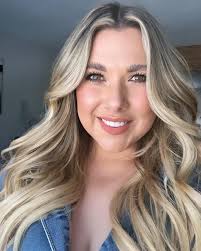Beyond the Install: The Stylist's Ultimate Guide to Preventing Extension Damage
"Will extensions damage my hair?"
Last week, my client Sarah sat in my chair asking me this exact question for the third time. She said, "I want extensions so badly, but my friend's hair broke off in chunks after hers. I'm terrified."
I get it. We've all seen the horror stories. But here's the truth that can transform your business: hair extension damage is almost entirely preventable.
It's not about the extensions themselves. It's about the education, the application, and the partnership between a skilled stylist and an informed client.
For stylists, mastering damage prevention isn't just a technical skill. It's an ethical obligation and your single greatest business asset. A client who leaves with healthier, more beautiful hair becomes a walking billboard for your work. They return, they refer, and they trust you completely.
Let me show you how to become that stylist.
The Science of Healthy Extensions: Understanding How Damage Happens
To prevent damage, you first have to understand the mechanics behind it. It's not one single thing but a combination of factors that can stress the natural hair if not managed correctly.
Traction alopecia: The follicle's worst enemy
This is the big one. Traction alopecia is hair loss caused by continuous pulling or tension on the hair follicle.
My client Jennifer came to me after wearing heavy clip-in extensions for two years. She took them out and noticed her hairline was receding. She was panicking. She said, "What did I do to my hair?"
I looked at her scalp and could see the damage. I said, "Jennifer, those extensions were too heavy and you wore them in the same spots every day. The constant tension damaged your follicles."
When an extension is too heavy for the section of natural hair it's attached to, or if it's installed too tightly, it places constant strain on the follicle. Over time, this can cause inflammation, weaken the follicle's grip on the hair, and eventually lead to miniaturization, where the follicle shrinks and can no longer produce healthy hair.
In severe cases, this can become permanent.
Jennifer was devastated. She said, "Will my hair grow back?"
I said, "Maybe. But we need to give your hair a break from extensions for at least six months and see if the follicles recover."
That's a conversation I never want to have with a client. Prevention is everything.
Chemical concerns: When bonds and hair don't mix
The adhesives and bonds used in some extension methods are designed to be safe, but their interaction with hair is a delicate science.
My client Amanda came to me after having tape-in extensions removed at another salon. Her natural hair where the tapes had been was completely fried, crispy and breaking off.
She said, "They used some kind of remover spray and just ripped them out. Now my hair is destroyed."
I looked at the damage and said, "Amanda, they stripped your cuticle. The remover they used was too harsh and they didn't take the time to properly dissolve the adhesive."
The goal is to create a secure attachment without compromising the hair's protective outer layer, the cuticle. Improper application or using the wrong removal solutions can strip the cuticle, leaving the hair brittle and prone to breakage.
Mechanical breakage: More than just a bad brush day
This type of damage comes from physical force. It happens during improper brushing, sleeping on wet extensions, or a rough removal process.
My client Rachel texted me three weeks after her install: "My brush is full of hair every time I brush. Is this normal?"
I called her and said, "Rachel, how are you brushing your hair?"
She said, "Just like I always do. I start at the roots and brush down."
I said, "That's the problem. You're ripping through the attachment points. Let me show you the right way."
I had her come in and I demonstrated the proper technique: hold the hair at the base and gently brush from the ends up to work out tangles without pulling at the root.
She started doing it correctly and the excessive shedding stopped. She texted me a week later: "So much less hair in my brush now! Thank you."
This is why client education on gentle handling is non-negotiable.
The heat factor: Protecting hair's protein structure
We all know heat styling can damage hair, and this is doubly true with extensions.
My client Lisa loved her flat iron. She used it every single day on the highest setting. Three months into wearing extensions, her hair felt like straw.
She came in and said, "Something is wrong with the extensions. They feel awful."
I ran my fingers through her hair and said, "Lisa, it's not the extensions. You're frying them with heat. Are you using a heat protectant?"
She said, "No. Do I need to?"
I said, "Absolutely. And you need to turn your flat iron down. You're degrading the keratin protein in both the extension hair and your natural hair."
Excessive heat degrades the keratin protein that gives hair its strength. For clients who love their hot tools, using them without a quality heat protectant or on a setting that's too high can fry everything.
The Damage Prevention Blueprint: Your Master Technique Guide
Knowing the science is half the battle. Applying it with precision is what makes you a master.
Step 1: The pre-flight check, consultation is everything
A successful, damage-free installation begins before a single weft is placed.
Last month, a potential client named Michelle came in wanting extensions. I looked at her hair and it was extremely fine and thin. She said, "Can you do them today?"
I said, "Michelle, I need to be honest with you. Your hair isn't strong enough for extensions right now. If I install them, they're going to damage your hair."
She was disappointed. She said, "But I want them so badly."
I said, "I know. But I'd rather tell you the truth now than take your money and have your hair break off. Let's do some strengthening treatments for three months and then reassess."
She appreciated my honesty. Three months later, her hair was healthier and we did the extensions successfully.
A thorough consultation is your diagnostic tool. You need to assess hair density and strength. Can their natural hair realistically support the weight of extensions? Be honest if a client's hair is too fine or weak.
Check scalp health for any signs of irritation, sensitivity, or existing conditions.
Consider lifestyle. Is your client a top-knot-wearing gym enthusiast or someone who air-dries their hair? Their daily habits will influence the best method and maintenance plan.
Step 2: The perfect match, choosing the right method
Not all methods are created equal for every hair type. Your expertise shines when you can recommend the perfect fit.
Sarah, the client from the beginning who was scared of damage, had medium-density hair with some previous color damage. I said, "Sarah, I'm going to recommend hand-tied wefts for you. They distribute weight evenly across a row rather than concentrating it on a single point. This significantly reduces the stress on individual hair follicles."
She trusted my recommendation. Six months later, her natural hair was healthier than when we started. She said, "I was so scared, but my hair actually feels better now."
Step 3: The art of application, precision is protection
This is where your technical skill becomes paramount.
The golden rule is that the extension should never be heavier than the natural hair it's attached to. Take clean, precise sections and ensure the density of the natural hair in your section is sufficient for the weft or bond.
During and after installation, you must check your work. Ask the client to turn their head side to side and up and down. Is there any pulling or pain? Look at the scalp. Are there immediate signs of redness or bumps at the attachment points?
My client Jessica told me after her install at another salon, "It hurt when she was done, but she said it would feel better in a few days."
I said, "Jessica, it should never hurt. Pain means it's too tight."
The installation should feel secure, not tight.
Keep your sections impeccably clean to prevent cross-hairs from pulling. Always stay a safe distance from the hairline and the natural part line where hair is finest and most fragile.
Beyond the Chair: Creating a Damage-Proof Partnership with Your Client
Your work in the salon is only part of the equation. A well-educated client is your partner in preventing damage.
Your client's home care bible
Provide clear, simple instructions. Don't just tell them, show them.
I spend 15 minutes at the end of every install demonstrating proper care. I hand my clients a brush and watch them brush their hair in front of me. I make them show me how they'll tie it up for bed.
My client Amanda said, "This feels like overkill."
I said, "Amanda, this 15 minutes right now will save you from damage later. Trust me."
A month later, she texted me: "Thank you for being so thorough. My friend got extensions and her stylist didn't explain anything. Hers are already matted and mine look perfect."
Washing technique: Use a sulfate-free shampoo and focus on cleansing the scalp. Avoid scrubbing the mid-lengths and ends where the bonds or wefts are.
Brushing protocol: Always use a brush designed for extensions. Hold the hair at the base and gently brush from the ends up to work out any tangles without pulling at the root.
Sleeping smarter: Never go to bed with wet hair. A loose braid or ponytail and a silk or satin pillowcase will prevent friction and matting overnight.
Teaching them the red flags
Empower your clients to be proactive. Teach them to look out for early warning signs between appointments.
Persistent itching or soreness around the attachment points. Excessive shedding when they brush their hair. A feeling of pulling or tension, especially when styling.
Tell them to contact you immediately if they experience any of these.
My client Rachel called me two weeks after her install. She said, "One spot on my head feels sore. Should I be worried?"
I said, "Come in tomorrow and let me check it."
One of the wefts had been placed slightly too close to another section and was creating tension. I adjusted it and the soreness went away immediately.
Early intervention can stop a minor issue from becoming a major problem.
The Business of Prevention: Turning Hair Health into Your Biggest Asset
Let me be direct: preventing damage is the foundation of a sustainable and profitable extension business.
Clients who have a bad experience don't just leave. They tell their friends. But clients who see their own hair thrive while wearing extensions? They become your loyal, long-term advocates.
Sarah, my scared client from the beginning, has now referred seven friends to me. She posts photos of her hair constantly. Last month she tagged me and said, "My natural hair is healthier now than before I got extensions. That's how you know you found the right stylist."
That kind of endorsement is priceless.
Protect yourself and your business by documenting everything. Take before and after photos. Have clients sign a form acknowledging they've received and understood the aftercare instructions.
This professionalism not only safeguards you but also reinforces the value and seriousness of the service you provide.
Frequently Asked Questions About Extension Damage
Can extensions actually protect my natural hair?
Absolutely. By taking the brunt of daily heat styling and environmental exposure, extensions can act as a protective shield for the natural hair underneath, allowing it to grow longer and stronger.
My client Jennifer's natural hair grew four inches in six months while wearing extensions because she stopped heat styling and manipulating it.
Which extension method is the absolute safest?
The safest method is always the one that is best suited for the client's hair type and applied correctly by a certified professional. However, methods that excel at weight distribution, like hand-tied wefts and some tape-in applications, are often excellent choices for minimizing stress on natural hair.
What if I see a little shedding? Is that damage?
It's normal to shed 50 to 100 hairs a day. When extensions are in, those shed hairs are caught at the attachment point. When the extensions are removed, all that accumulated shed hair comes out at once, which can look alarming but is completely normal.
Breakage is different. It involves short, snapped pieces of hair.
How do I talk to a client who thinks they have damage?
Listen with empathy. Bring them into the salon for a thorough assessment. Be honest and transparent.
My client Lisa came in convinced her extensions had damaged her hair. I looked at it and said, "Lisa, this isn't damage from the extensions. This is heat damage from your flat iron. Let me show you."
She felt relieved that it was fixable. I gave her a heat protectant and taught her proper technique.
If the issue is related to their home care, use it as a gentle re-education moment. If it's an application issue, own it and create a plan to resolve it.
Honesty builds more trust than perfection.
Master the Art of Damage-Free Extensions
Preventing damage is more than just a technique. It's a philosophy. It's the commitment to your craft and your clients that sets you apart as an elite stylist.
When you master the science of hair health and the art of perfect application, you don't just sell a service. You deliver confidence.
Ready to build your reputation on beautiful, healthy, damage-free extension work? Learn more at Christian Michael Hair Extensions or book an appointment to see these techniques in action.

Tiffany Loe
Owner & Master Stylist
Hair extension expert and salon owner with a passion for helping stylists succeed. Tiffany has been transforming hair and building confidence for over 15 years.




